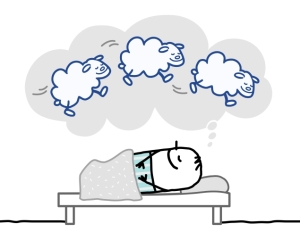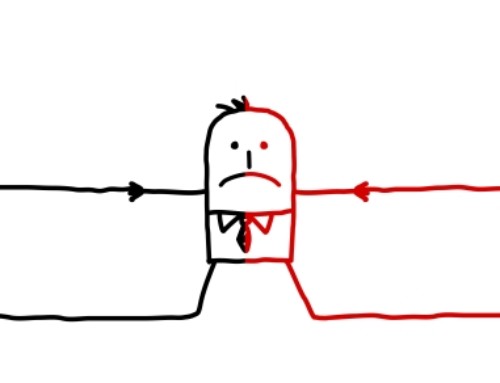In my last article, I discussed how trying not to think about something makes you think about it more and the negative effects which stem from this strategy. In this article, I discuss strategies to counteract this tendency to suppress thoughts and the disadvantages which come with it.
As I discussed in my last article, engaging in thought suppression can contribute to several issues as a result of the strategy achieving the opposite of its intended effect. That is, trying not to think of something actually makes it more likely you will think of that something. When that ‘something’ is a disturbing thought, thought suppression can play a role in obsessive-compulsive disorder (OCD), post-traumatic stress disorder (PTSD) and generalized anxiety disorder (GAD).
An obvious concern arises regarding alternatives to thought suppression which a person can use when disturbing thoughts enter their minds—alternatives which do not lead to the negative effects of thought suppression in responding to such thoughts. In the following sections, I will describe alternatives to thought suppression for responding to disturbing thoughts which play a role in OCD, PTSD and GAD. Unlike thought suppression, these alternative strategies are effective ways of responding to disturbing thoughts and are strategies which comprise key elements of the treatment plans from cognitive behavioural therapy (CBT) for addressing these issues.
Addressing thought suppression in obsessive-compulsive disorder (OCD)
One strategy to address thought suppression in OCD entails normalizing the disturbing thoughts which enter the person’s mind. People who suffer from OCD often view themselves as immoral or mentally ill for having disturbing ‘automatic thoughts’ focusing on themes involving sex and aggression. It is a relief when I inform such clients that everyone has such random thoughts pop into their minds involuntarily rather than being created through conscious deliberate thinking on the part of the individual.
Normalizing thoughts in this way makes it easier for a person to accept the thoughts and not feel the need to engage in thought suppression. Accepting the thoughts in this way lessens their power and detracts from the need for compulsive rituals like counting or checking to ‘undo’ the thoughts to lessen anxiety the person experiences as a result of viewing the thoughts as disturbing.
Acceptance of negative automatic thoughts as an alternative to thought suppression in OCD can also be facilitated by using behavioural experiments to help the person test their view that they have reason to be concerned about such thoughts. For example, if a person suffering from OCD believed that their having thoughts of harming someone would result in their acting on these thoughts to cause harm, an experiment could be conducted in which the person deliberately thinks of harming someone. When the person obtains evidence that having the negative thoughts do not cause the negative event to occur, acceptance of such thoughts as an alternative to thought suppression and its ensuing compulsive rituals is easier to achieve.
Addressing thought suppression in post-traumatic stress disorder (PTSD)
People suffering from post-traumatic stress disorder (PTSD) typically engage in thought suppression as a form of avoiding thinking about the traumatic event to which they were exposed as well as any stimuli which remind them of it. This thought suppression fueled by avoidance results in disturbing thoughts and images related to the trauma entering the person’s mind more often.
One way to counter thought suppression in PTSD is to help the person change the disturbing thoughts and images to ones which are less disturbing. For example, many disturbing thoughts are beliefs which can be changed by examining the evidence supporting and not supporting those beliefs. Similarly, many negative images related to the trauma are inaccurate and can be replaced by less disturbing and more accurate images.
A second strategy to counter thought suppression in PTSD is to help the person test their beliefs which drive them to use thought suppression. For example, a common belief of this type is that they will lose control or not be able to function if they allow themselves to think of negative thoughts and images related to the trauma. When these beliefs are put to the test, the person learns that although the trauma-related thoughts and images are bothersome and lead to some discomfort, the person does not fall apart or lose control or cease to be able to function.
Collecting this data from behavioural experiments will help the person to sit with their negative thoughts and images related to the trauma rather than trying to suppress them. They can then focus on critically examining the thoughts and images to determine whether less disturbing and more accurate thoughts and images can be substituted in their place. The tendency to use thought suppression should decrease even further as a result.
Addressing thought suppression in generalized anxiety disorder (GAD)
Generalized anxiety disorder (GAD) is characterized by strong anxiety fueled by worrying about various concerns. Because thinking of these concerns leads the person to experience strong anxiety, the person suffering from GAD will often engage in thought suppression. The result is that their worries and the strong anxiety accompanying these worries are often with the person throughout their day.
One of the best ways to counter thought suppression in GAD is to deal with your worries directly, such as by scheduling regular ‘worrying time’ for a set period once per day. There are two benefits to doing so which help to counter thought suppression: One is that if a person uses proven-effective skills for addressing their worries they can change their worry-based disturbing thoughts into thoughts which are less disturbing.
Examples of such strategies to use during worrying time include problem-solving and action plans to address concerns which are the sources of worry and anxiety. Cognitive strategies can also be used during worrying time such as evaluating with evidence the likelihood of worrisome events actually occurring and planning a set of coping strategies to deal effectively with negative events if they do occur.
Scheduling worrying time also counteracts thought suppression by helping the person discover that accepting their worrying thoughts will not lead them to lose control, fall apart or be unable to function—particularly if they deal with their worries constructively through the strategies I mentioned.
I help my clients in OCD counselling, trauma counselling and anxiety counselling use these strategies to counteract thought suppression in my work as a Calgary psychologist and a Cochrane psychologist. If you are faced with one or more of these issues, it may be helpful for you to meet with a psychologist who specializes in CBT.
May you use strategies to counteract thought suppression when needed,
Dr. Pat






Leave A Comment